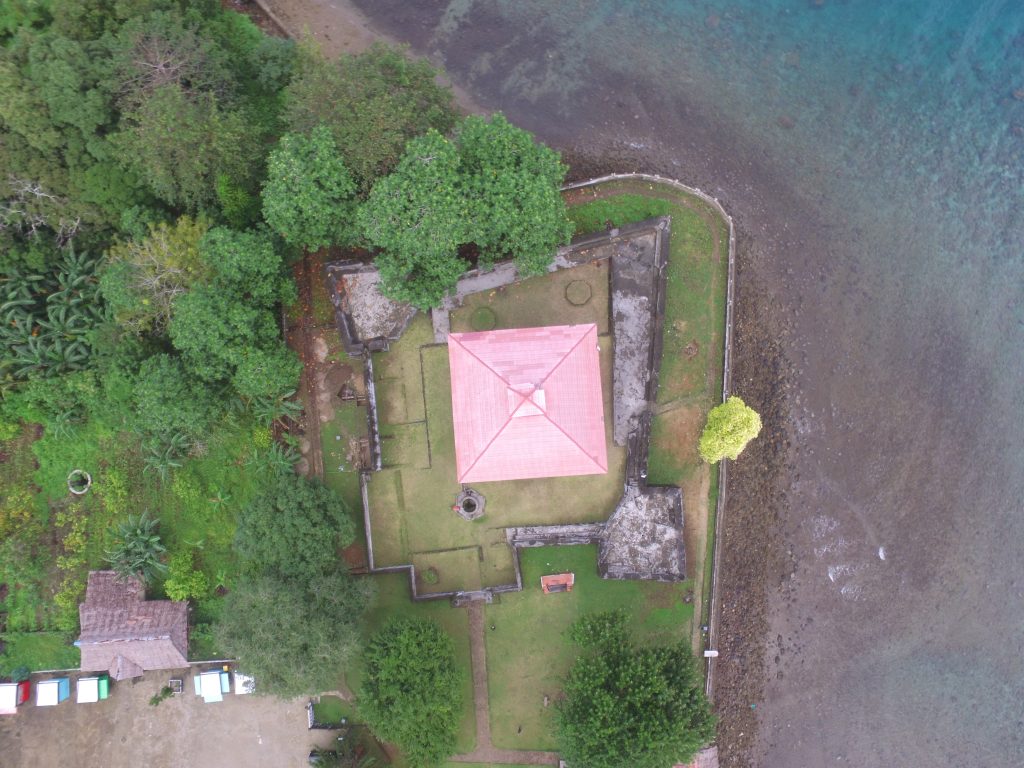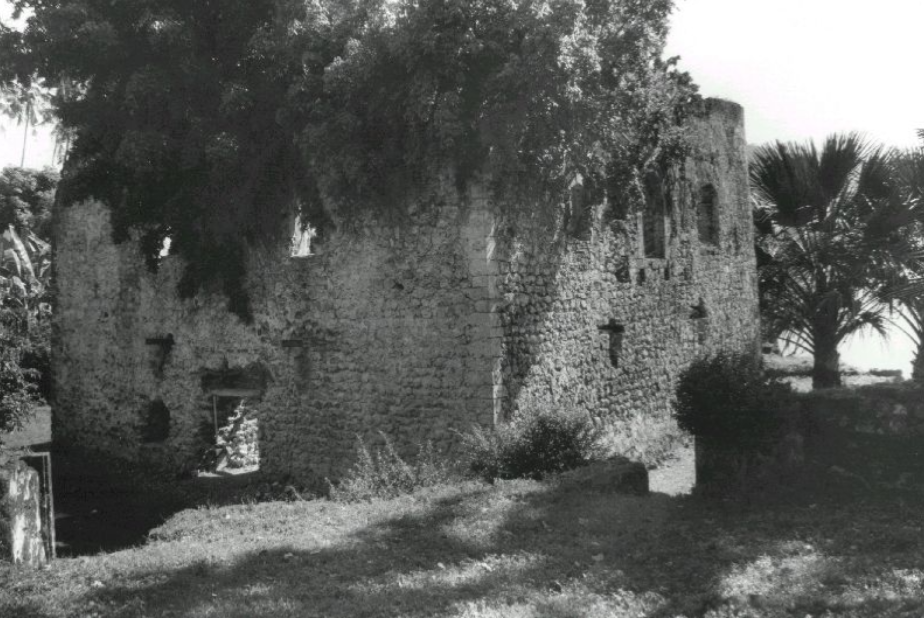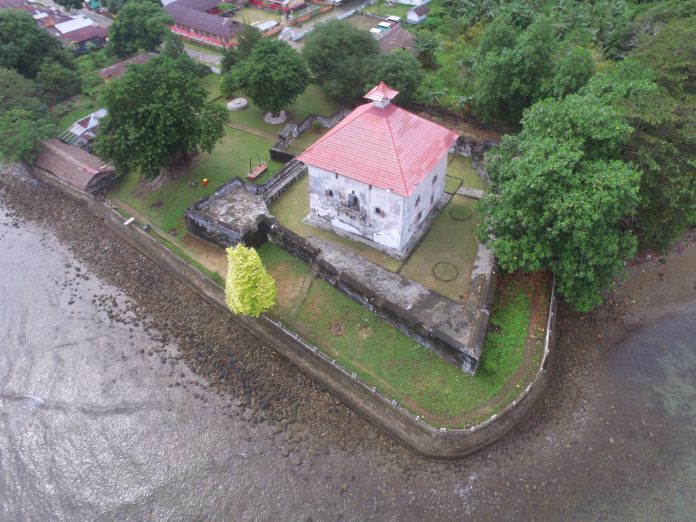
Benteng Amsterdam terletak di pesisir utara Pulau Ambon. Pada tahun 1600 Laksamana Steven van der Hagen mengawasi pembangunan benteng Belanda pertama di kepulauan Indonesia yang diberi nama ´Kasteel van Verre´ (secara harfiah diterjemahkan: Kastil Jauh). Pendirian benteng pertama ini menandai dimulainya aneksasi perdagangan rempah-rempah oleh Belanda dari sebelumnya Portugis.
Sisa-sisa Benteng Amsterdam yang masih dapat dilihat hingga saat ini berasal dari masa kemudian. Pada tahun 1633, pedagang VOC Johan Ottens menghancurkan pos perdagangan lama di Hila dan memerintahkan dibangunnya sebuah benteng batu yang dikelilingi pagar kayu di situs ini. Konstruksi ini rusak berat akibat gempa bumi pada tahun 1644.

Sesuai perintah gubernur Arnold de Vlaming van Oudsthoorn pada tahun 1648, pekerjaan perbaikan dan perluasan benteng dimulai. Dia mengganti palisade dengan benteng batu berbentuk segi empat dengan dua benteng pertahanan dan memperbesar benteng. Pada tahun 1674 benteng Amsterdam kembali dilanda gempa kuat yang disusul tsunami. Dari 40 orang yang ditempatkan di benteng, 28 orang tewas, sementara lebih banyak lagi orang yang tinggal di pemukiman sekitar kehilangan nyawa.
Setelah kejadian tersebut benteng kembali diperbaiki. Selama pemberontakan Ambon tahun 1817, Benteng Amsterdam diserang tetapi tidak ditaklukkan. Pada tahun 1863 bangunan ini ditinggalkan oleh militer, namun pemerintah setempat tetap diperintahkan untuk memelihara bangunan tersebut agar dapat digunakan kembali jika terjadi pemberontakan. Pada tahun 1869 benteng ini secara resmi dihapus dari daftar benteng. Bangunan tersebut tidak digunakan lagi dan menjadi reruntuhan, sampai kampanye restorasi dilakukan. Dindingnya diplester dan dicat putih, elemen kayunya diganti, dan atapnya dibangun kembali. Sejak tahun 1994 Benteng Amsterdam telah dibuka untuk keperluan pariwisata.
In English:
Fort Amsterdam is located on the north Coast of Ambon Island. Here, in 1600 Admiral Steven van der Hagen had overseen the construction of what is considered to have been the first Dutch fort in the Indonesian archipelago named the ´Kasteel van Verre´ (literally translated: Faraway Castle). The establishment of this first fort signalled the beginning of the Dutch take-over of the lucrative spice trade in the region, at the cost of the Portuguese.

The remnants of Fort Amsterdam that can still be seen today are from later date. In 1633 VOC merchant Johan Ottens demolished the old trade post in Hila and ordered a stone redoubt encircled by wooden palisades to be built on this site. This construction was heavily damaged by an earthquake in 1644. As ordered by governor Arnold de Vlaming van Oudsthoorn in 1648 works starded repairing and extending the fort. He had the palisades replaced by quadrangular stone ramparts with two bastions and enlarged the redoubt.

In 1674 fort Amsterdam was again hit by a strong earthquake, followed by a tsunami. Of the 40 people stationed on the fort 28 perished, while many more people living in the surrounding settlements lost their lives. After this event the fort was repaired. Seventeenth and eighteenth century drawings and engravings give an impression of what the three storey blockhouse would have looked like when it continued to function as a fortification to protect Dutch trade interests.

During the Ambon revolt in 1817, Fort Amsterdam was attacked but not conquered. In 1863 it was abandoned by the military, but still the local authorities were instructed to maintain the building so it could be utilized again in the event of a rebellion. In 1869 the fort was officially removed from the list of fortifications. The structure became disused and had fallen in to ruin, until a restoration campaign was setup. The walls have been plastered and painted white, wooden elements have been replaced and the roof has been reconstructed. Since 1994 it has been open to visitors.
Source: https://www.atlasofmutualheritage.nl/en/page/6853/amsterdam-fort-hila






